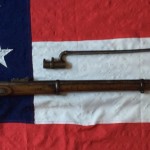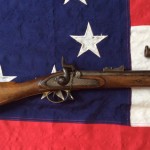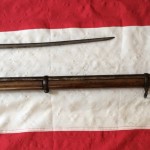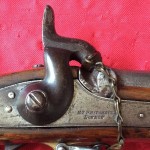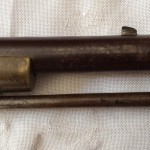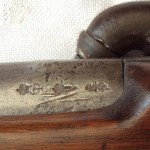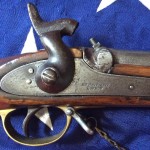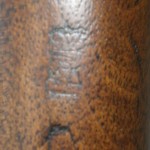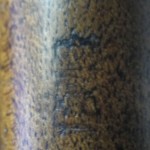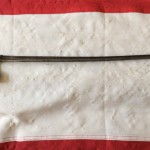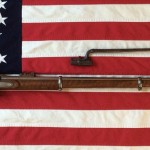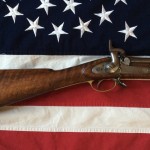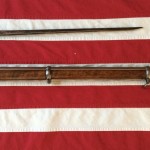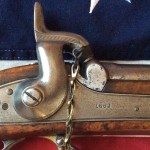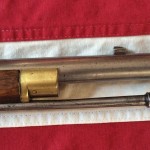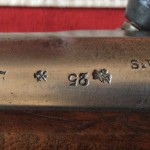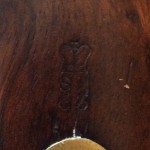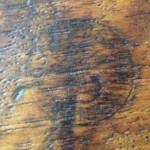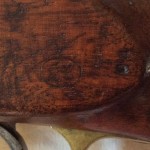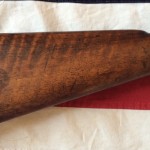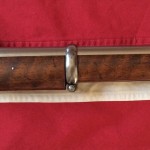- R.T. Pritchett Rifle Musket, Enfield & Socket Bayonet
- Pritchett Rifle Musket Enfield, Shoulder Stock
- Pritchett Rifle Musket Enfield, Forward Stock
- R.T. Pritchett Enfield Rifle Musket, Lock Plate
- R.T. Pritchett Enfield Rifle Musket, Front Sight
- Enfield Rifle Musket, London Proof Marks
- R.T. Pritchett of London, Enfield Rifle Musket
- 1862 RT Pritchett Sinclair and Hamilton Import Stamp
- 1862 RT Pritchett Sinclair and Hamilton Import Stamp
- Enfield Socket Bayonet
The R.T. Pritchett Enfield Rifle Musket, Sinclair & Hamilton Company, (Crown/ SH/C/ Arrow). I think this mark is referred to as Type #2. The mark is on the bottom of the stock close to the trigger guard. The mark is faint but under the right light it is clearly there. I will be using the macro setting on my camera to photo the mark I hope it is clear enough to be seen.
Pritchett was a well known contractor who supplied many Enfield Rifle Muskets and parts to Confederate brokerage houses. Two of the more famous ones were S. Isaac & Campbell and Sinclair, Hamilton & Company.
Pritchett the inventor of the improved bullet for the 1853 Enfield, firing one of his own rifles on a windy, rainy day, shot 98 out of 100 shots in a 7 foot circle at 600 yards. Pretty good shooting especially at that range.
Aside from inventing and building guns Pritchett was also a business man who like so many others took advantage of the financial opportunities the American Civil War had to offer. Another one of those opportunists were Archibald Hamilton. Archibald was the Director of the London Armoury Company; they were a major gun making company in London. The quality of the London Armoury Guns was superior to other London Contractors since the L.A.CO’s parts were interchangeable and the others were not.
Archibald was a major player in the English arms industry, Director of the L.A.Co and was partners in a brokerage firm, this would create the perfect storm for the Confederacy to purchase, ship and receive the much needed weapons.
It wasn’t long before the South became the London Armoury Company’s principal client and it manufactured and shipped more than 70,000 rifles and about 7,000 revolvers (out of a total production run of about 10,000) to the South. However these weapons had to pass through the Union blockades and the number that actually reached the Confederate army is unknown. Confederates acclaimed the Armoury’s guns as the best weapons made in Britain.
Towards the end of the war the London Armoury Company was almost completely dependent on sales to the Confederacy and survived for only a year after the end of the war, dissolving in the Spring of 1866.
So back to the Pritchett Rifle Musket, this gun is in fair condition with a wonderful mocha color stock. The barrel and hardware have a brownish color throughout but no rust. This is one of the first Civil War guns I purchased and I probably paid a little more then I should have but all and all it’s a very nice example of a Confederate Import with the crown/ SH/C/arrow mark.
Your thoughts are welcome, contact Gene West at civilwararsenal@yahoo.com

